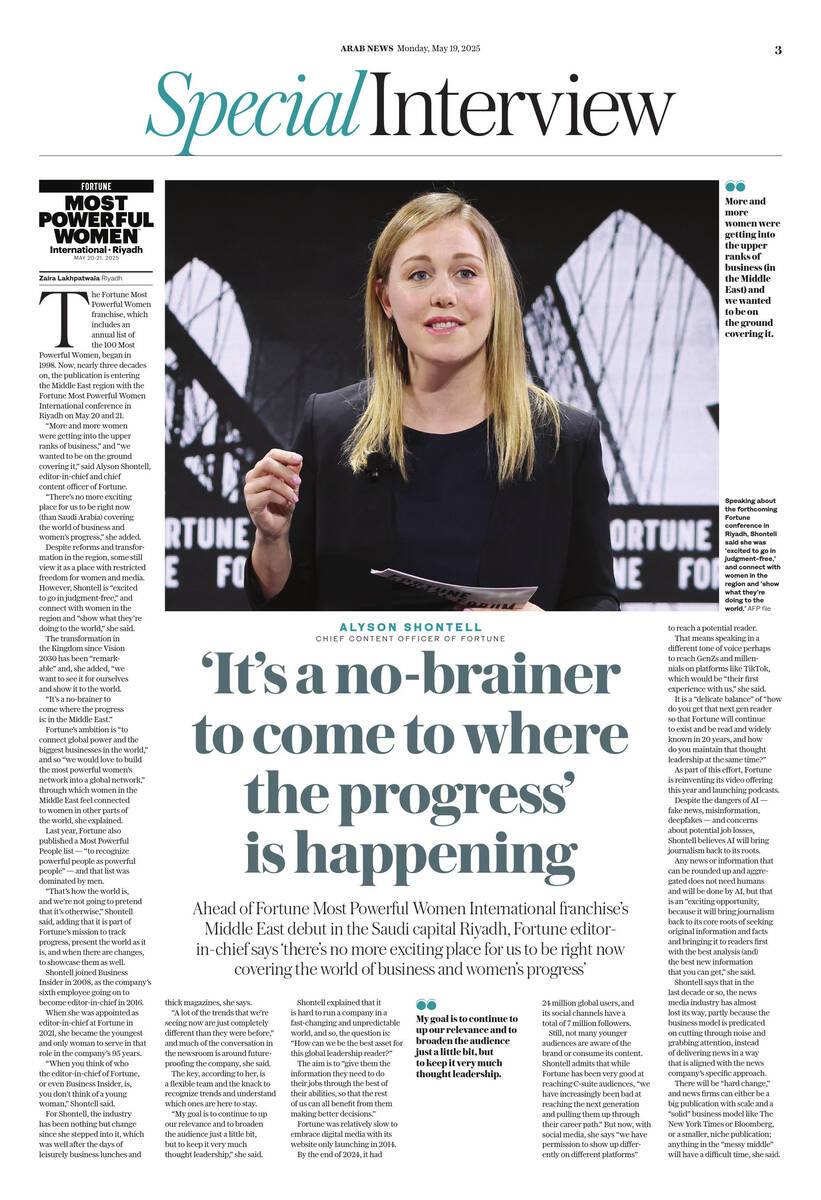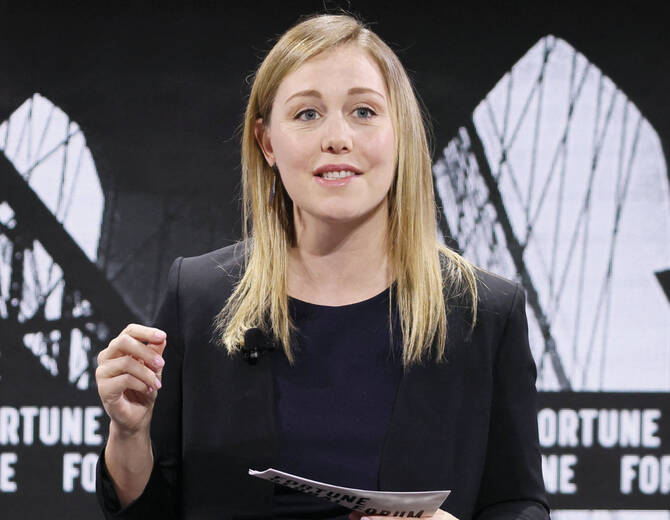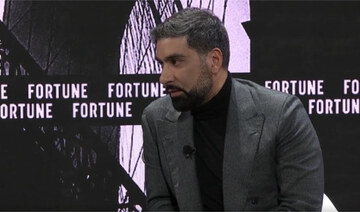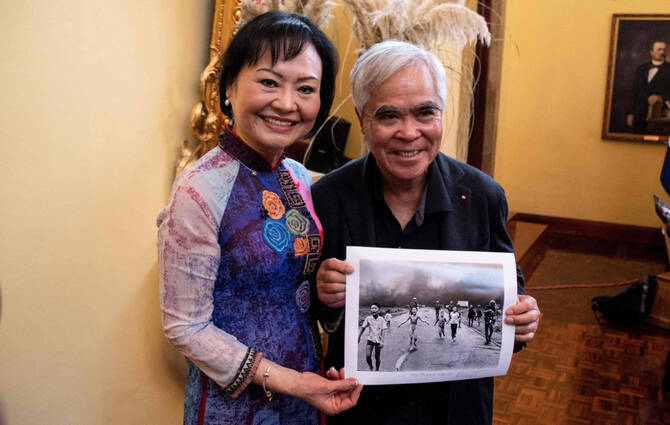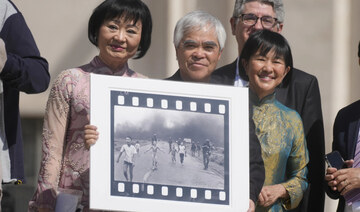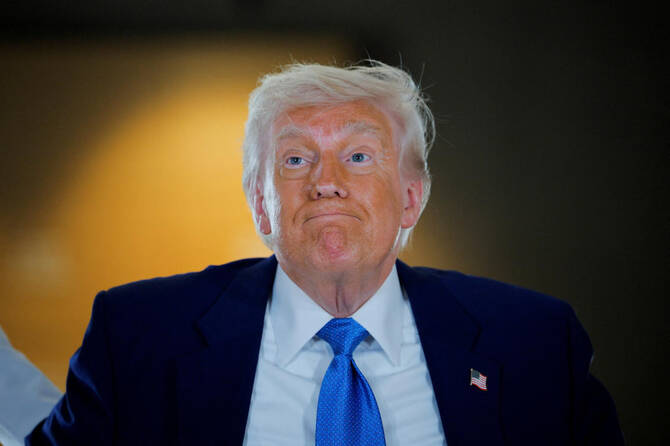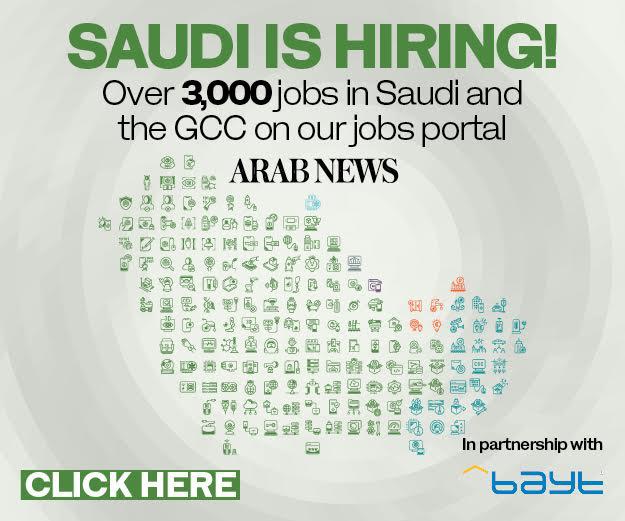RIYADH: The Fortune Most Powerful Women franchise, which includes an annual list of the 100 Most Powerful Women, began in 1998. Now, nearly three decades on, the publication is entering the Middle East region with the Fortune Most Powerful Women International conference in Riyadh on May 20 and 21.
“More and more women were getting into the upper ranks of business,” and “we wanted to be on the ground covering it,” said Alyson Shontell, editor-in-chief and chief content officer of Fortune.
“There’s no more exciting place for us to be right now (than Saudi Arabia) covering the world of business and women’s progress,” she added.
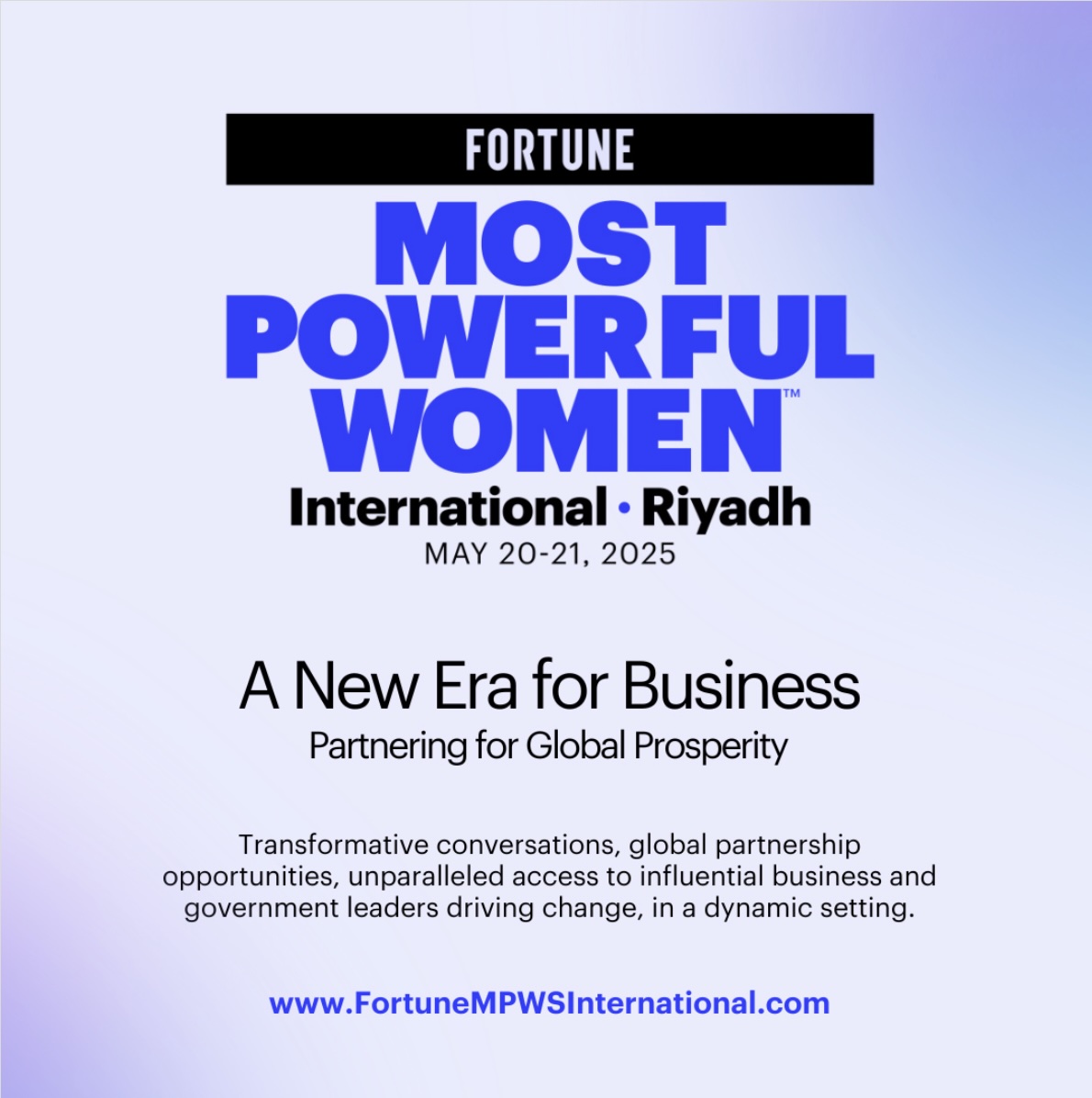
Despite reforms and transformation in the region, some still view it as a place with restricted freedom for women and media. However, Shontell is “excited to go in judgment-free,” and connect with women in the region and “show what they’re doing to the world,” she said.
The transformation in the Kingdom since Vision 2030 has been “remarkable” and, she added, “we want to see it for ourselves and show it to the world.
“It’s a no-brainer to go where the progress is: the Middle East.”
EXPLORE: A New Era for Business: Partnering for Global Prosperity
Fortune’s ambition is “to connect global power and the biggest businesses in the world,” and so “we would love to build the most powerful women’s network into a global network,” through which women in the Middle East feel connected to women in other parts of the world, she explained.
This year, 11 percent of Fortune 500 companies are run by women, which is the highest number it has ever been, Shontell said.
There is still a long way ahead before gender equality is reached in businesses, but “that’s a big reason why we think it’s still important to show the changing evolution of power,” she said.
Last year, Fortune also published a Most Powerful People list — “to recognize powerful people as powerful people” — and that list was dominated by men.
“That’s how the world is, and we’re not going to pretend that it’s otherwise,” Shontell said, adding that it is part of Fortune’s mission to track progress, present the world as it is, and when there are changes, to showcase them as well.

For Alyson Shontell, editor-in-chief and chief content officer of Fortune, there’s no more exciting place for her team to be right now to covering the world of business and women’s progress than Saudi Arabia. (AFP/File)
At the beginning of this year, US President Donald Trump issued an executive order on his second day in office calling titled “Ending Illegal Discrimination and Restoring Merit-Based Opportunity.”
He has issued multiple orders since then aimed at rolling back the diversity, inclusion and equity (DEI) policies of major corporations, foundations, non-profits, educational institutions and even the government.
One order, which deems DEI policies “illegal,” suggests that these policies are a “guise” for “dangerous, demeaning, and immoral race- and sex-based preferences.”
The directives have raised several concerns, some around women’s participation in the workforce.
Shontell, however, remains optimistic. “There’s a pretty strong commitment from women in the United States,” she said.
“We have made a lot of progress over the last 50 years here, and I don’t think many people would like to see that backslide.”
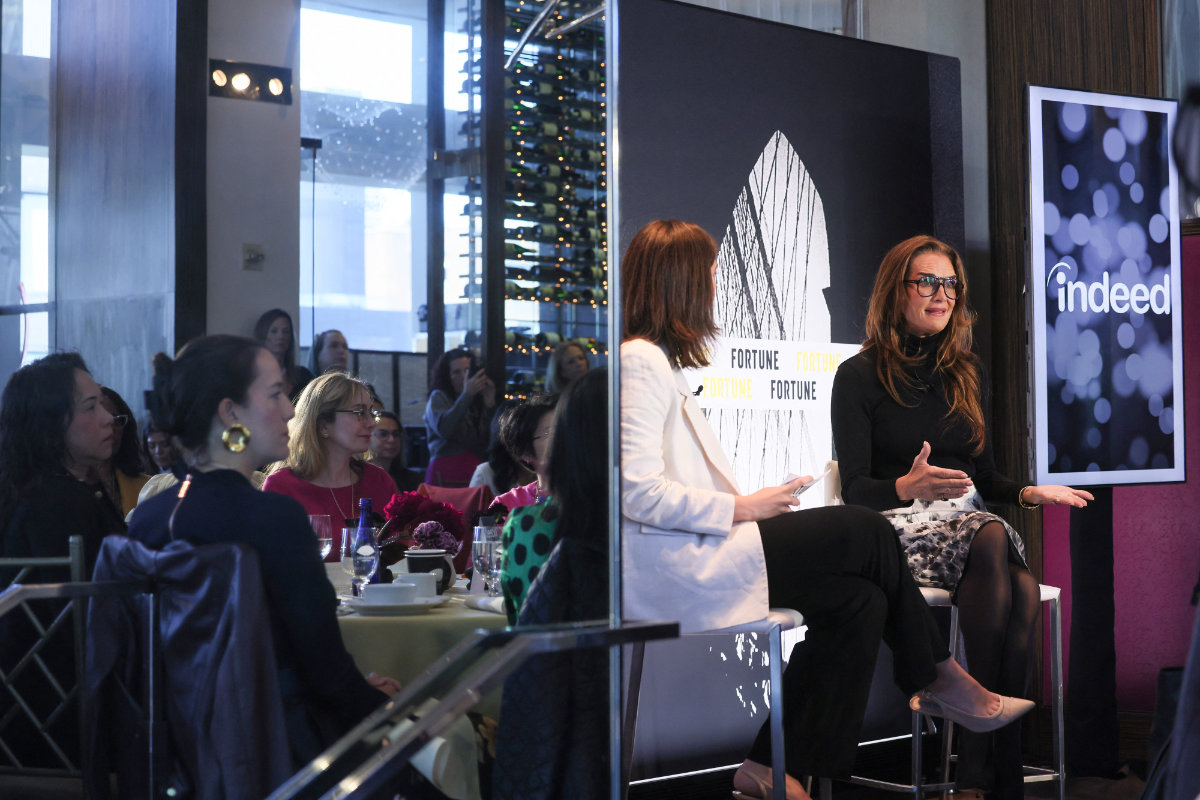
Alyson Shontell says that despite US President Donald Trump's policies aimed at rolling back the diversity, inclusion and equity (DEI) policies of major corporations, foundations, non-profits, educational institutions and even the government, women have made a lot of progress in the United States and there is no sign of sliding back. (AFP/File photo)
Shontell herself has been part of that commitment. She joined Business Insider in 2008, as the company’s sixth employee going on to become editor-in-chief in 2016.
When she was appointed as editor-in-chief at Fortune in 2021, she became the youngest and only woman to serve in that role in the company’s 95 years.
“When you think of who the editor-in-chief of Fortune, or even Business Insider, is, you don’t think of a young woman,” Shontell said.
To illustrate her point, she said that even if one asked AI what it thought the editor of a business magazine looks like, it would draw up someone like JPMorgan Chase chairman and CEO, Jamie Dimon.
And she was right. We asked Meta AI and ChatGPT: “Can you generate an image of the editor-in-chief of a major global business publication?” The former gave us four images: one of a woman and three of men, while the latter gave a single image featuring a man
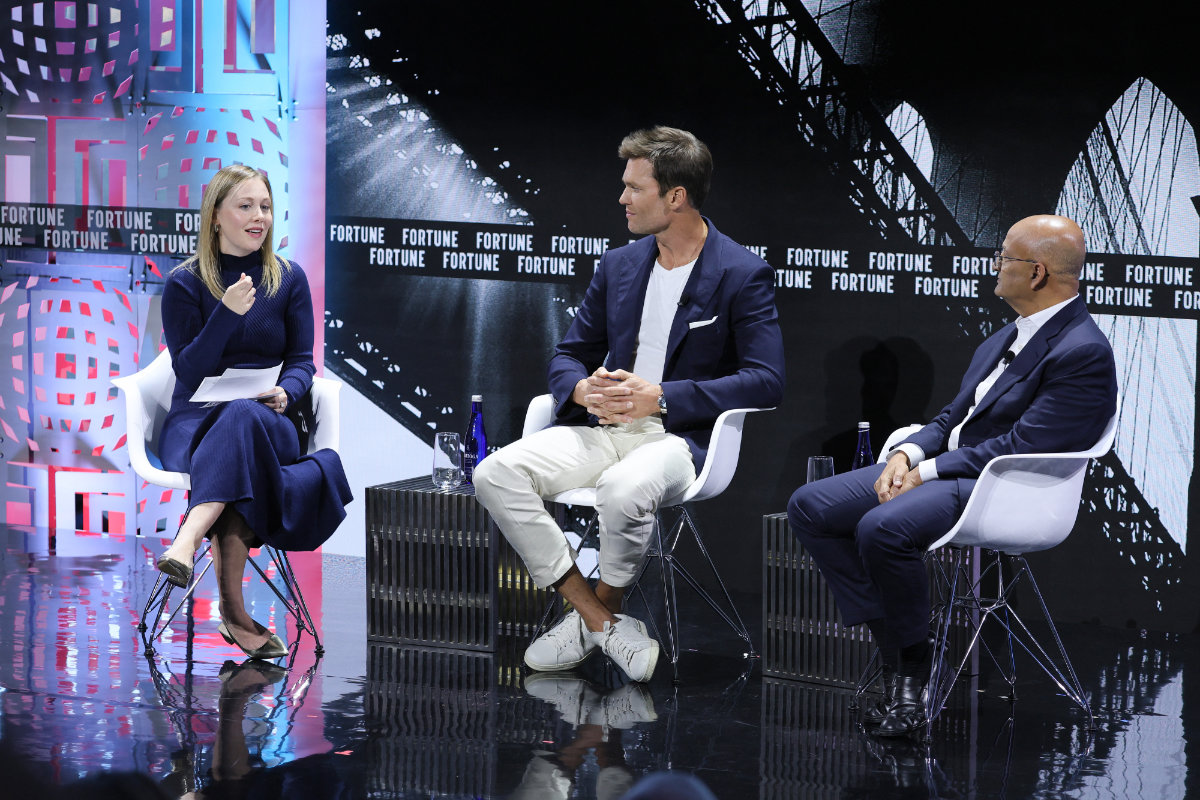
There is still a long way ahead before gender equality is reached in businesses, but “that’s a big reason why we think it’s still important to show the changing evolution of power,” says Alyson Shontell. (AFP/File)
The most common reaction Shontell receives is surprise. But she doesn’t mind. Rather, she likes surprising people and the feeling that “no one sees you coming.”
It “kind of gives you something to work toward something to be extra proud of when you achieve it,” she said.
For Shontell, the industry has been nothing but change since she stepped into it, which was well after the days of leisurely business lunches and thick magazines, she says.
“A lot of the trends that we’re seeing now are just completely different than they were before,” and much of the conversation in the newsroom is around future-proofing the company, she said.
The key, according to her, is a flexible team and the knack to recognize trends and understand which ones are here to stay.
When she was at Business Insider, her goal was to get everyone to read it. Fortune, on the other hand, is not about scale.
“My goal is to continue to up our relevance and to broaden the audience just a little bit, but to keep it very much thought leadership,” she said.
Shontell explained that it is hard to run a company in a fast-changing and unpredictable world, and so, the question is: “How can we be the best asset for this global leadership reader?”
The aim is to “give them the information they need to do their jobs through the best of their abilities, so that the rest of us can all benefit from them making better decisions.”
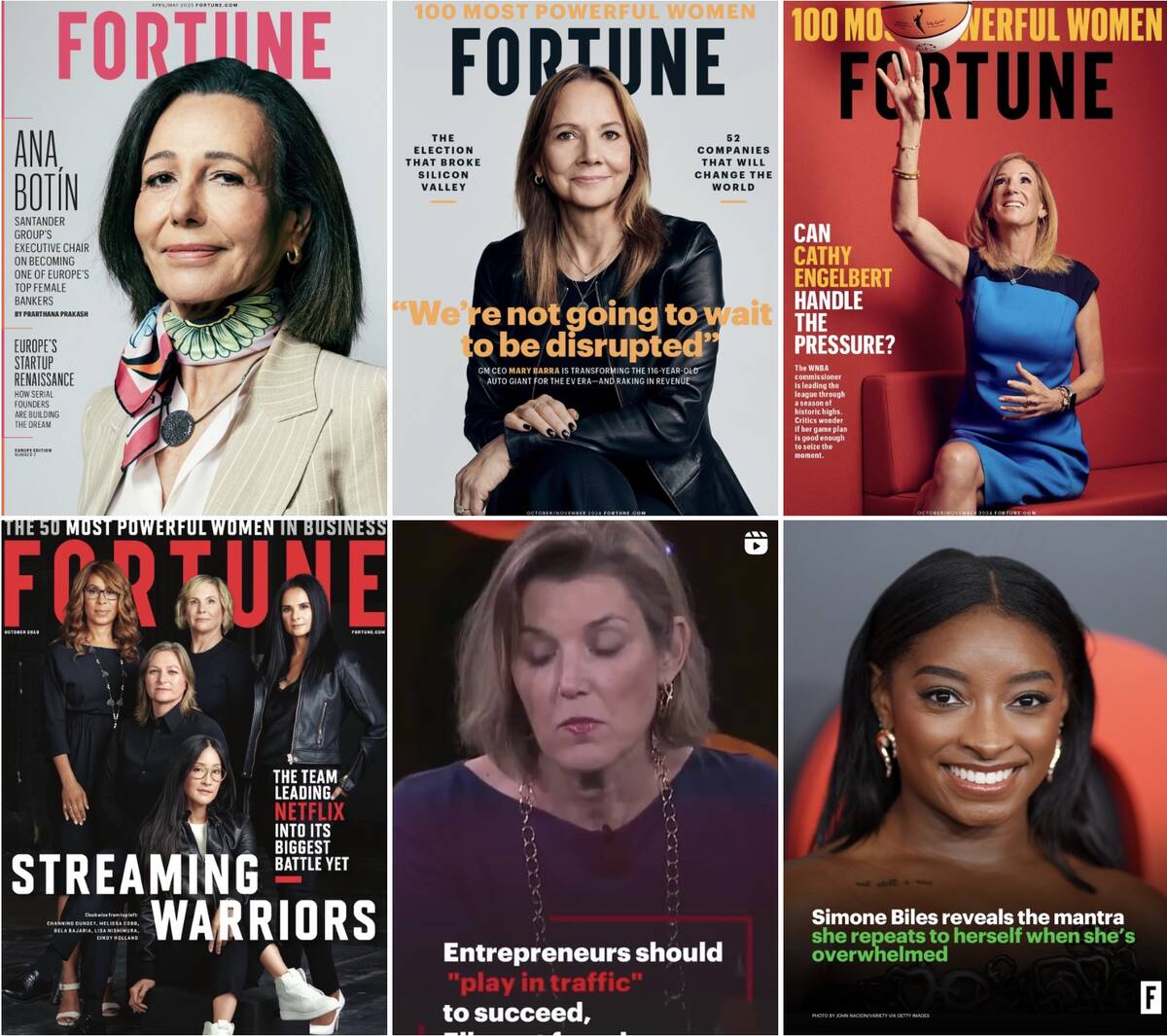
Alyson Shontell says she doesn’t mind the still prevailing common perception about gender in the business world. She likes surprising people and the feeling that “no one sees you coming.” (Instagram: fortunempw)
Fortune was relatively slow to embrace digital media with its website only launching in 2014.
By the end of 2024, it had 24 million global users, and its social channels have a total of 7 million followers.
Still, not many younger audiences are aware of the brand or consume its content. Shontell admits that while Fortune has been very good at reaching C-suite audiences, “we have increasingly been bad at reaching the next generation and pulling them up through their career path.”
But now, with social media, she says “we have permission to show up differently on different platforms” to reach a potential reader.
That means speaking in a different tone of voice perhaps to reach GenZs and millennials on platforms like TikTok, which would be “their first experience with us,” she said.
It is a “delicate balance” of “how do you get that next gen reader so that Fortune will continue to exist and be read and widely known in 20 years, and how do you maintain that thought leadership at the same time?”
As part of this effort, Fortune is reinventing its video offering this year and launching podcasts.
Artificial intelligence is at the core of technology and any conversation about it, and undoubtedly is an “incredibly powerful tool,” said Shontell.
Despite the dangers of AI — fake news, misinformation, deepfakes — and concerns about potential job losses, Shontell believes AI will bring journalism back to its roots.
Any news or information that can be rounded up and aggregated does not need humans and will be done by AI, but that is an “exciting opportunity, because it will bring journalism back to its core roots of seeking original information and facts and bringing it to readers first with the best analysis (and) the best new information that you can get,” she said.
Shontell says that in the last decade or so, the news media industry has almost lost its way, partly because the business model is predicated on cutting through noise and grabbing attention, instead of delivering news in a way that is aligned with the news company’s specific approach.
There will be “hard change,” and news firms can either be a big publication with scale and a “solid” business model like The New York Times or Bloomberg, or a smaller, niche publication; anything in the “messy middle” will have a difficult time, she said.
